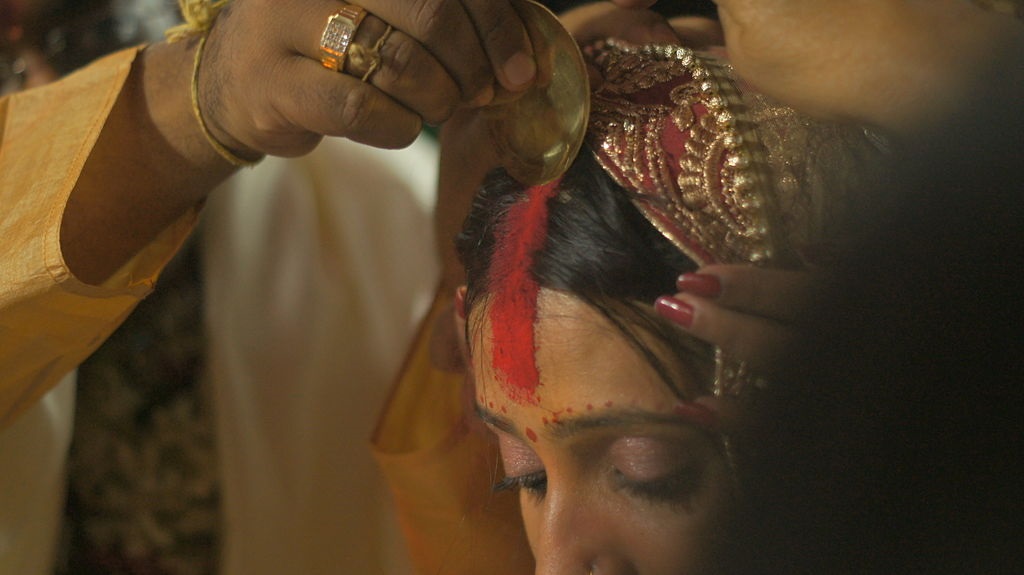In every prevailing society, there are numerous practices that can be traced back to the beginning of civilization. India, as one of the oldest civilizations of human history and perhaps the only one which is still flourishing in all its glory, is full of such practices. Among them is the applying of sindoor at the parting of hair by the married Indian women. It is a very sacred practice and a symbol of matrimony.

What is Sindoor
Sindoor is vermilion red in color and is also called just Vermilion. It is made up of turmeric and cinnabar. Its real importance lies in its symbol. Sindoor could only be applied by married Hindu women and its practice is strictly forbidden for a widow woman. Although, in some cultures, sindooram can be applied by unmarried women also. A woman usually starts applying sindoor by herself when her husband for the first time applied it on her maang (the Hindi word for the place where sindoor is applied). After that, it becomes a part of her daily life.
Sindoor is known by different names in many vernacular languages, some of them as sindur and kumkuma. Many legends and rituals are also associated with the practice of applying sindoor. The wiping of sindoor or its absence from the parting of the hairs of a married woman demonstrates widowhood.
The Beginning of The Tradition
It is unclear at what point in human history, the practice of applying sindoor started. But there are numerous historical pieces of evidence that state that this practice was observed by women during Harappan Civilization. For instance, the female idols of Harappan times excavated by the archeologists hint towards the practice of applying sindoor.
This traditional practice might even have started even before the Harappan civilization. In Mahabharata, one of the most famous epic of human history, the application of sindoor is mentioned. On one occasion in the Mahabharata, Draupadi sweeps away her sindoor because of the happenings in her city. It signifies its significance in terms of prosperity.
Significance of Applying Sindoor
In Hinduism, the significance of sindoor can be comprehended by the fact that it has been mentioned in Puranas several times. Adi Shankaracharya, a great theologian, has also written extensively about the importance of applying sindoor by married Hindu women. Apart from Hinduism, married Jain women also observe this practice.
How To Apply Sindoor
The method of applying sindoor differs from place to place and culture to culture. Some cultures, or some women, observe the filling of the complete parting hairline with vermillion. And some women just fill sindoor at the end of the hairline. As with many other rituals, the method of applying sindoor has also evolved with time. Nowadays many women of modern era, put sindoor in a triangular form at the parting of hairs where the head of the triangle point towards the nose.
The tradition of applying sindoor by married Indian women has stood the test of time. Not many of the ancient practices have achieved to do so. And for this, the credit should be given to the Indian women who are proud of their legacy and heritage that has been passed down through generations.

Pingback: 7 Exclusive and Unique Culture of India - Auchitya